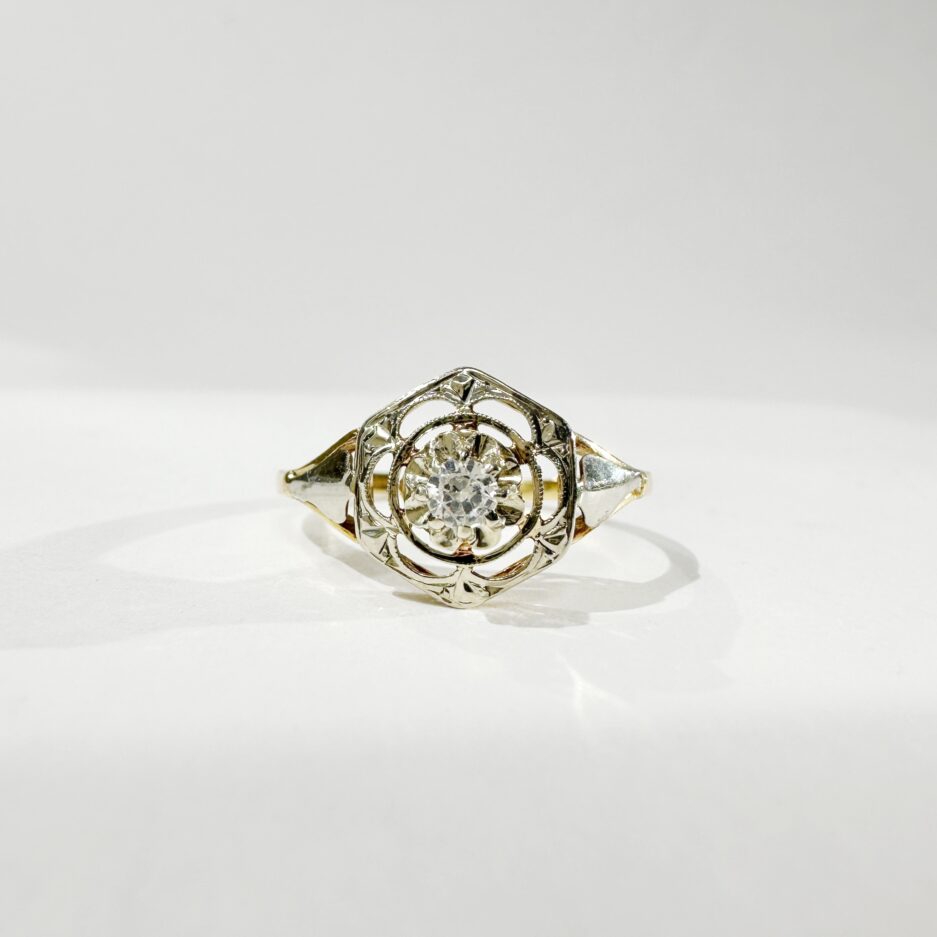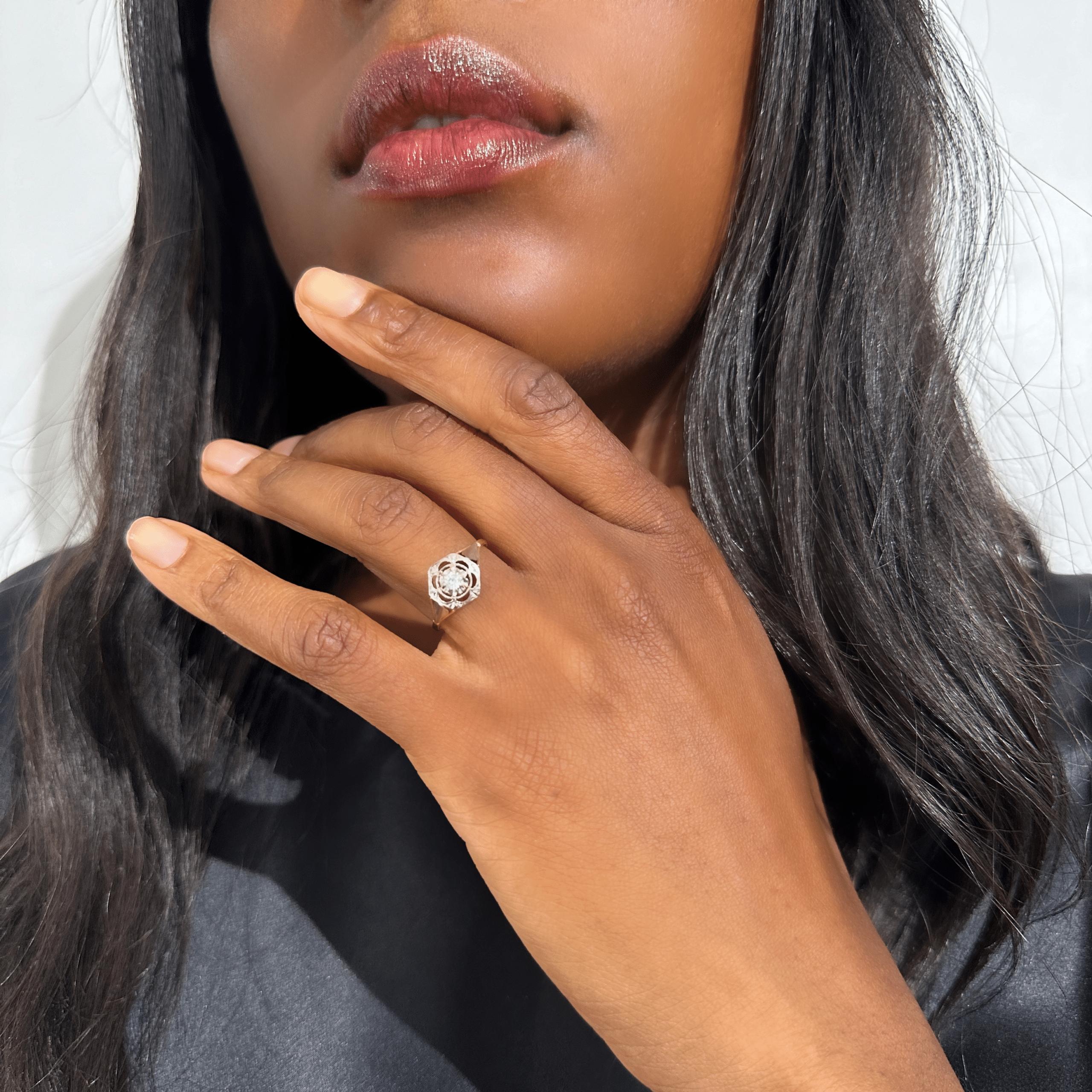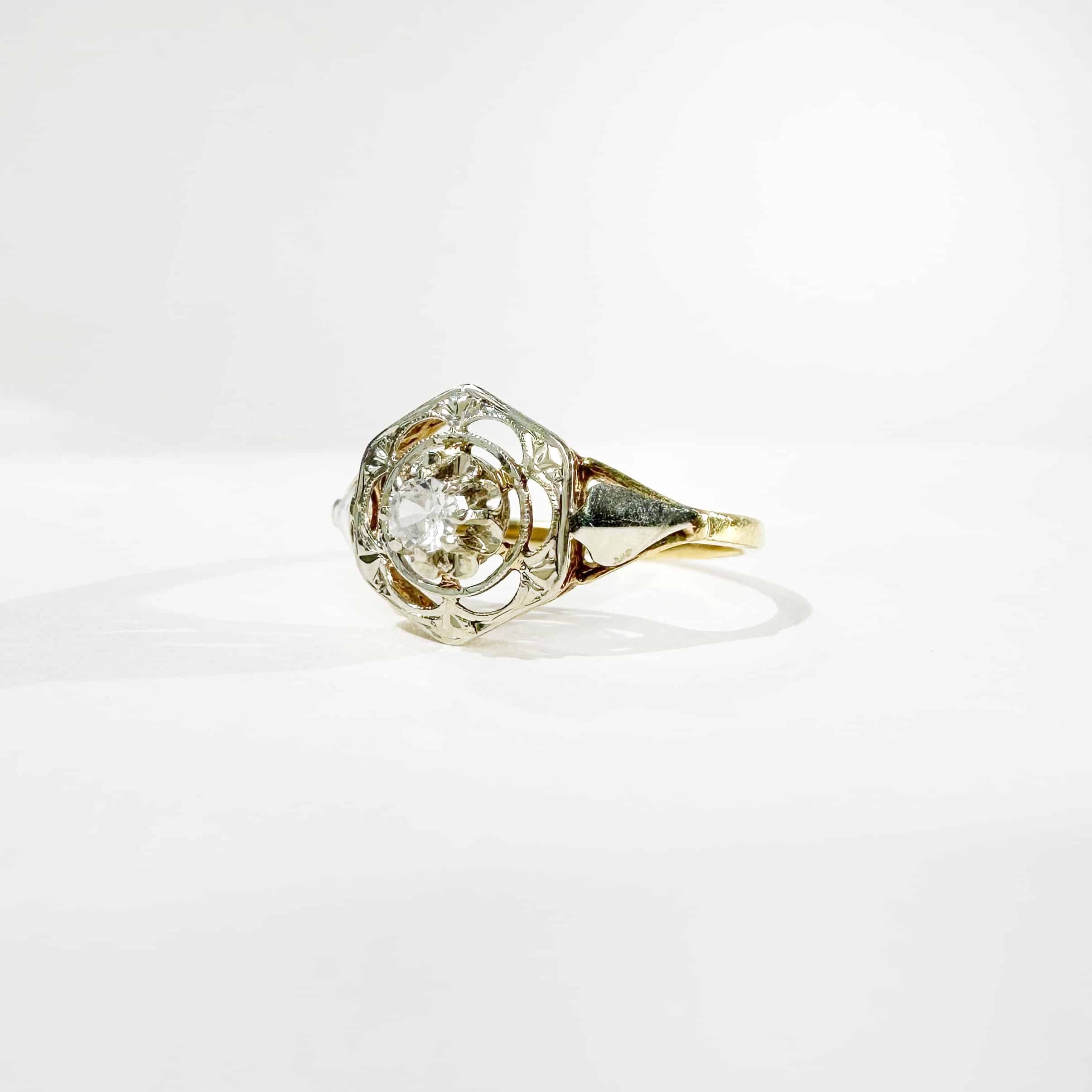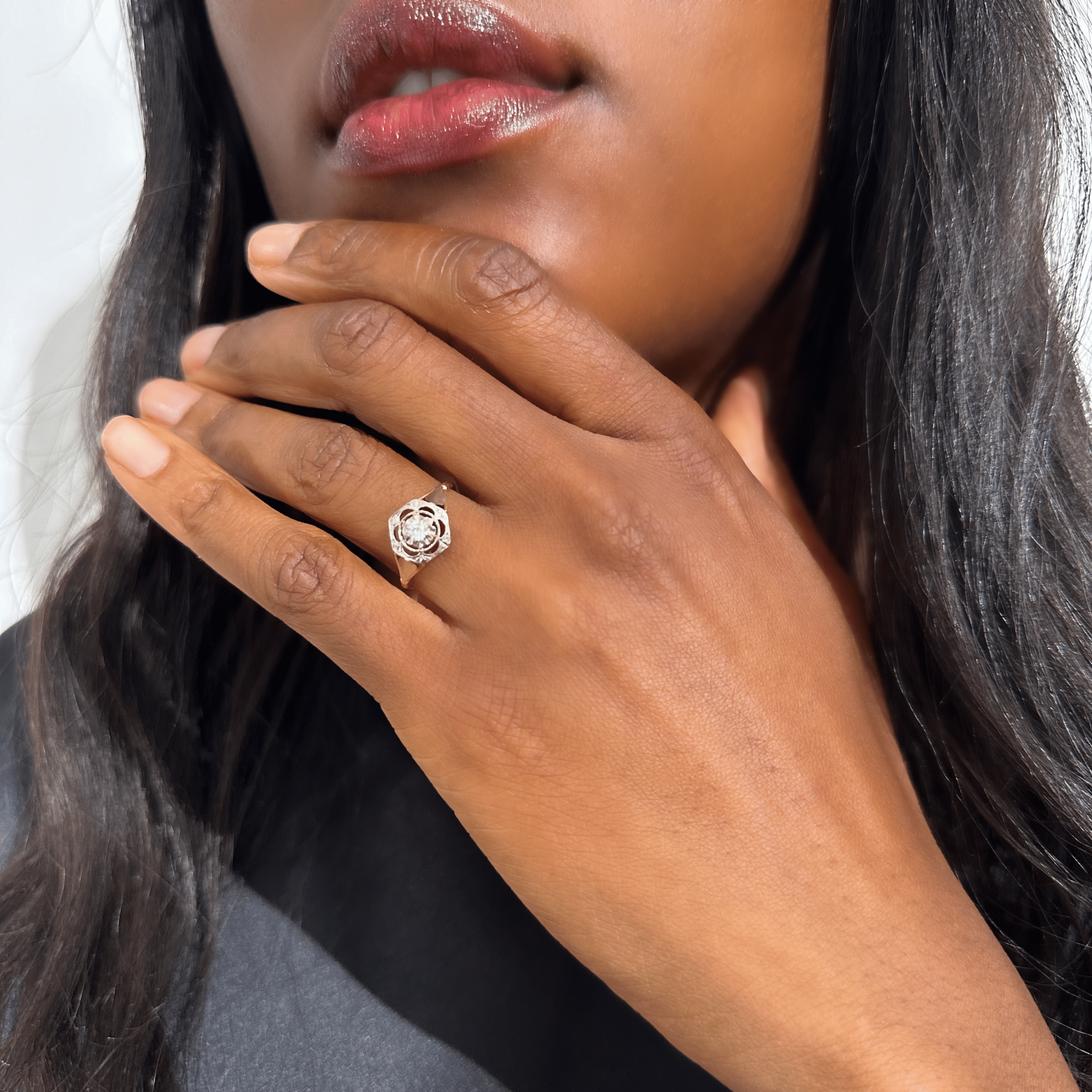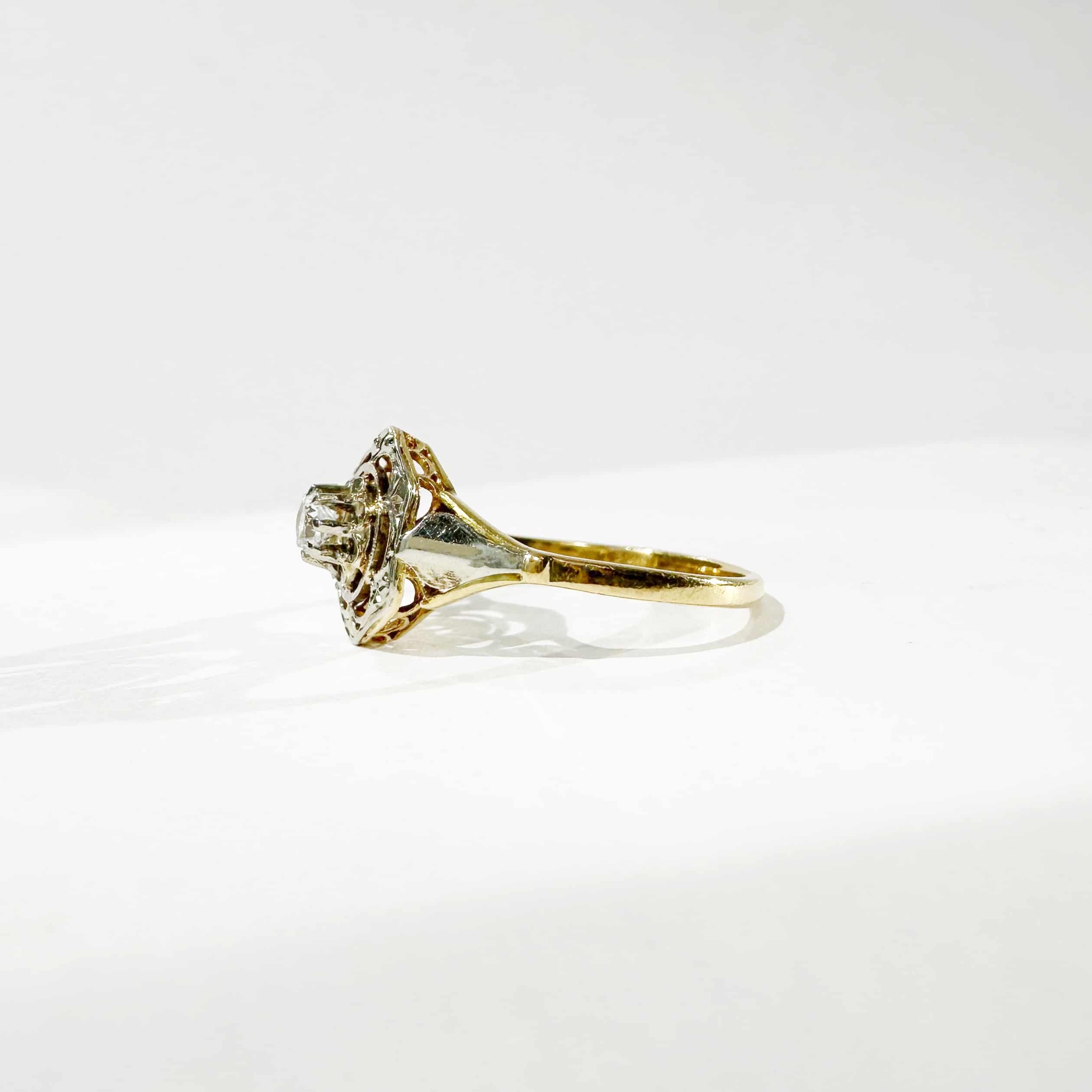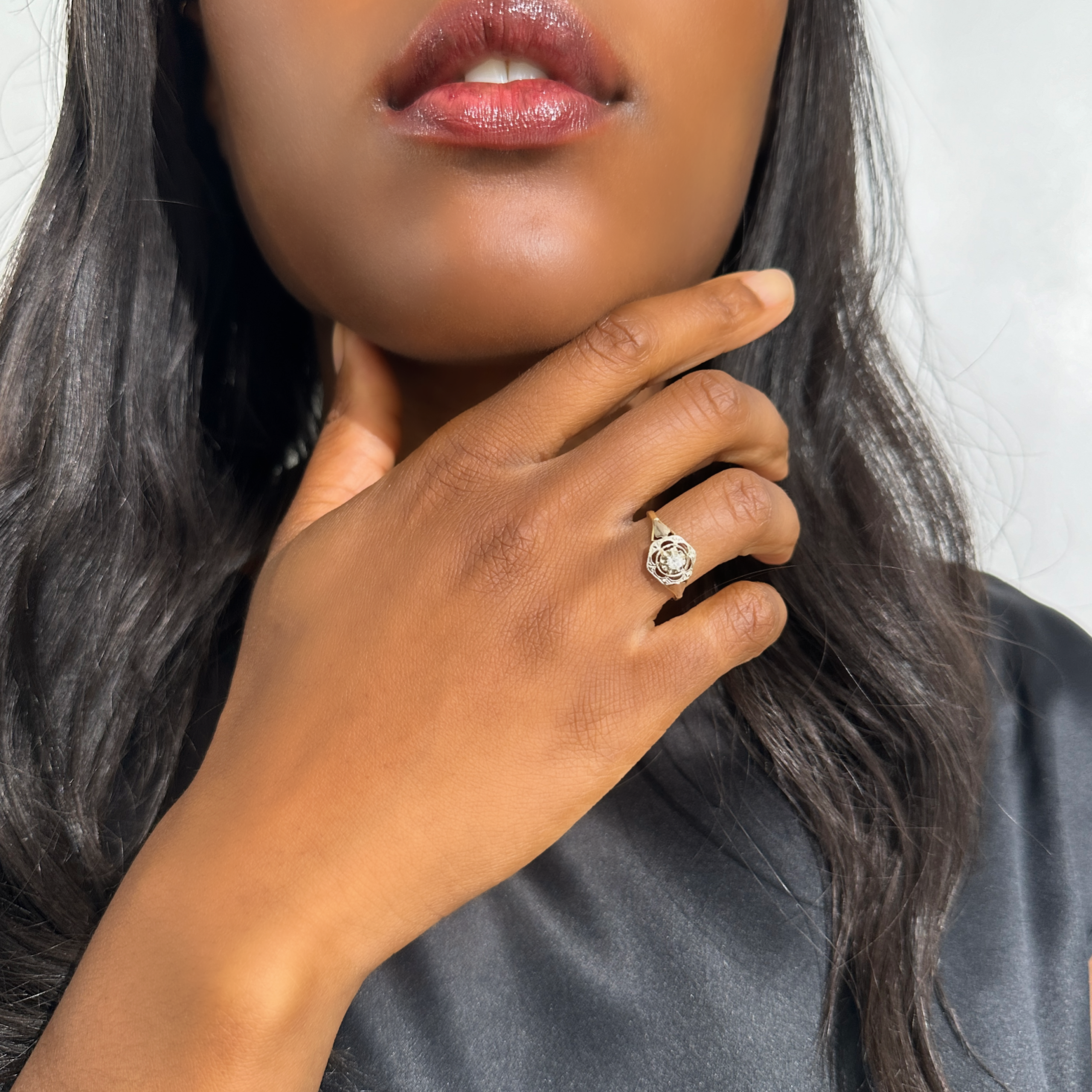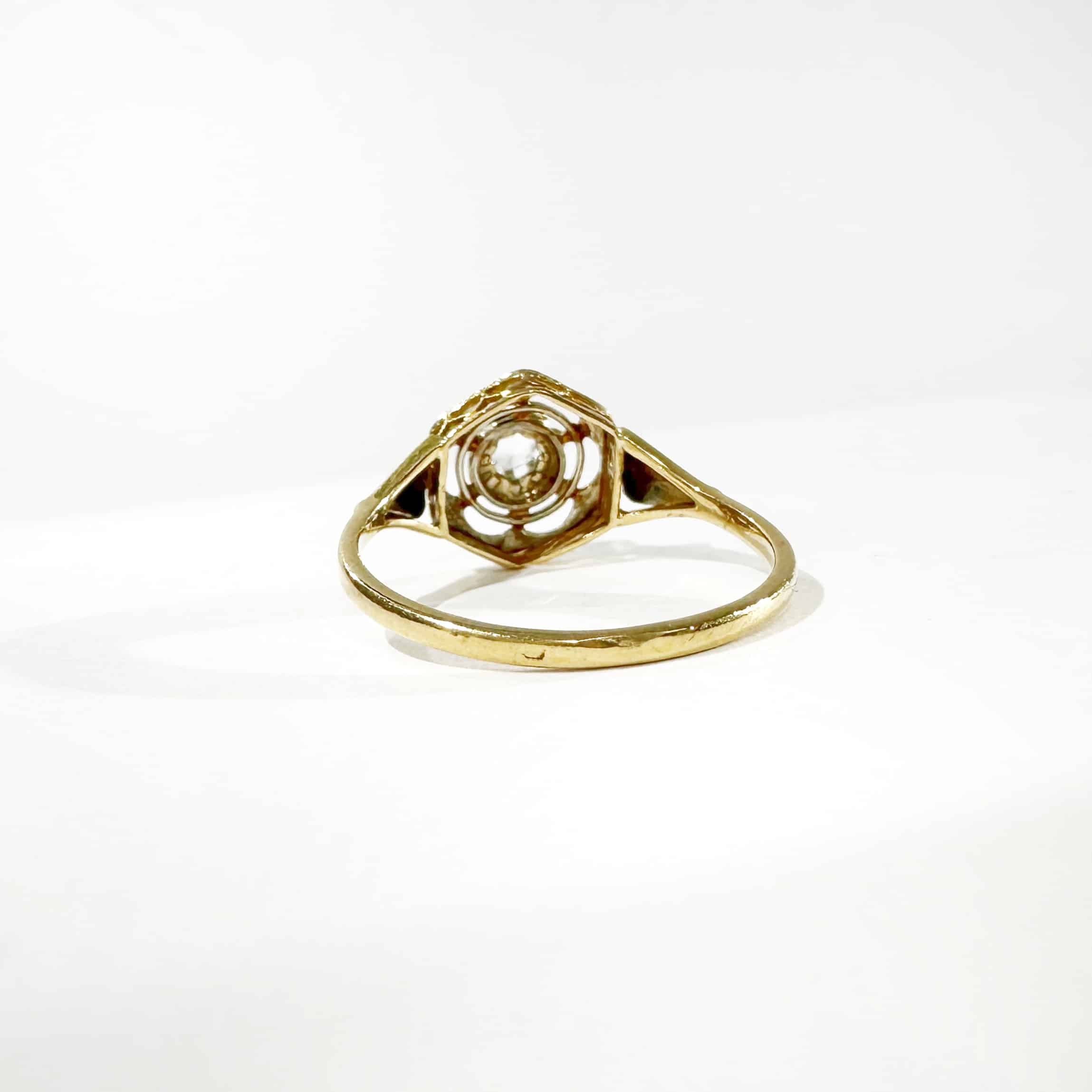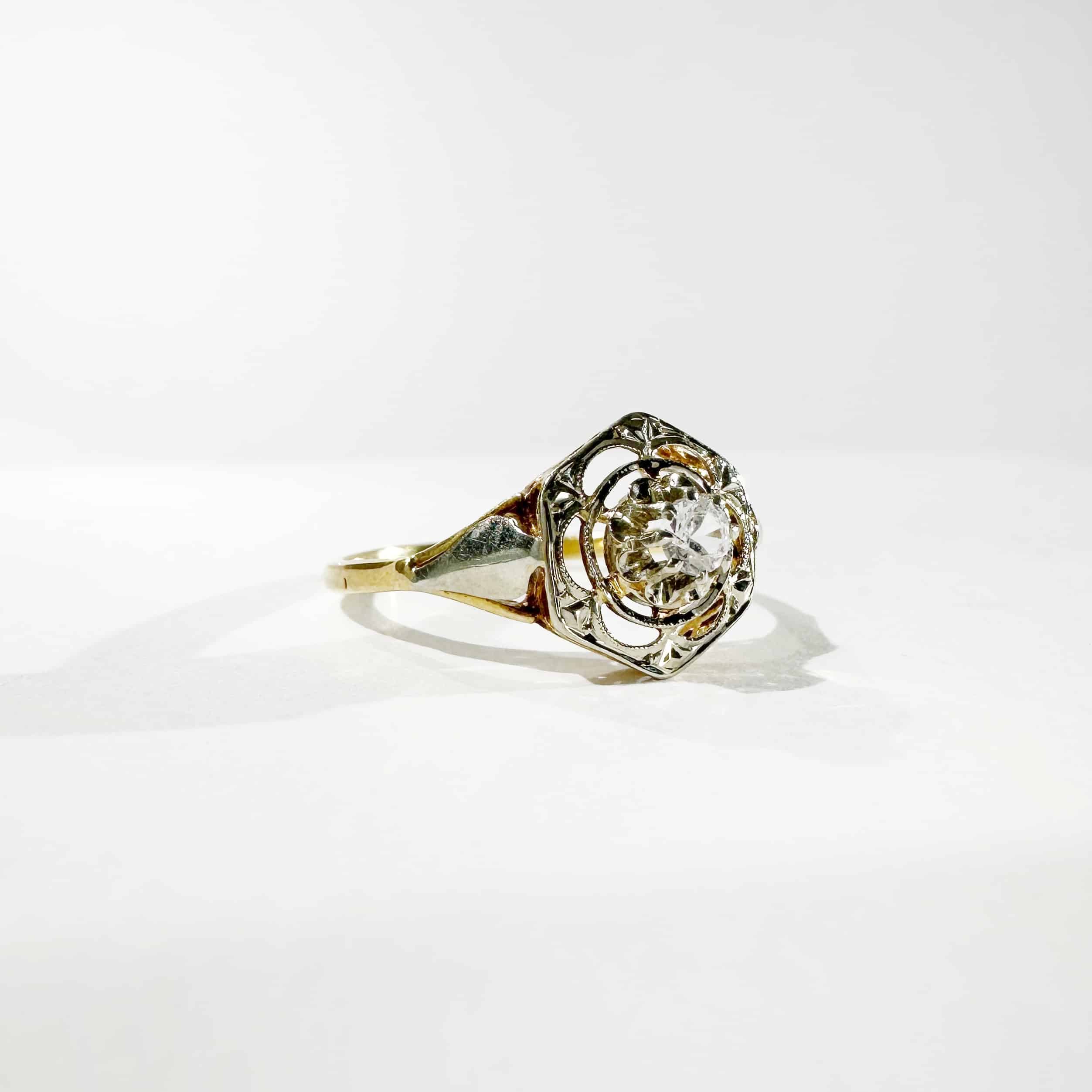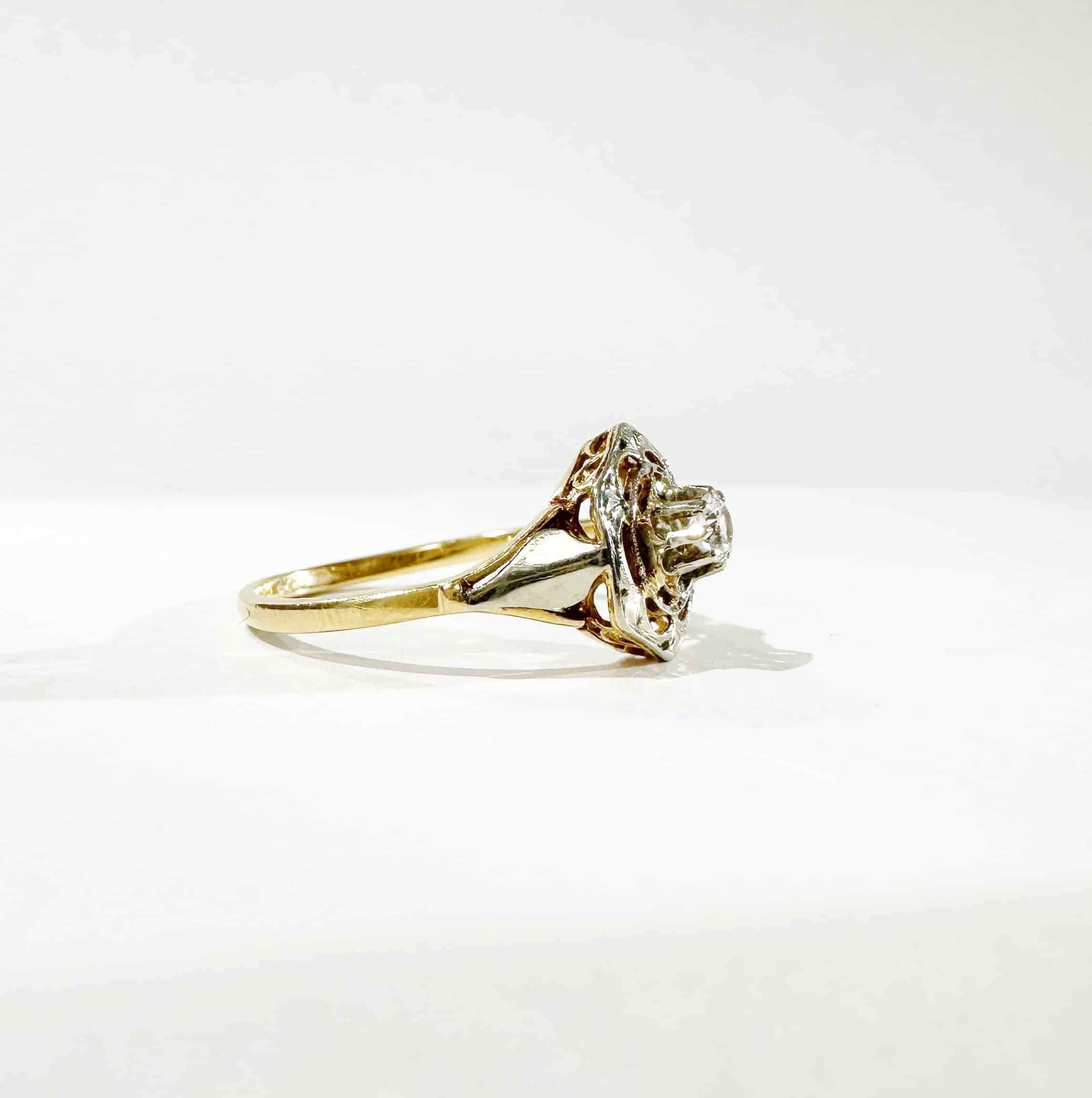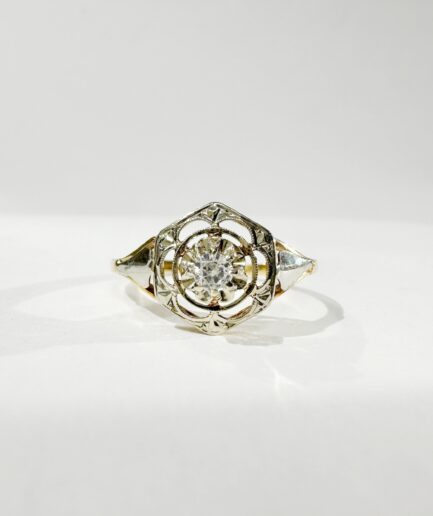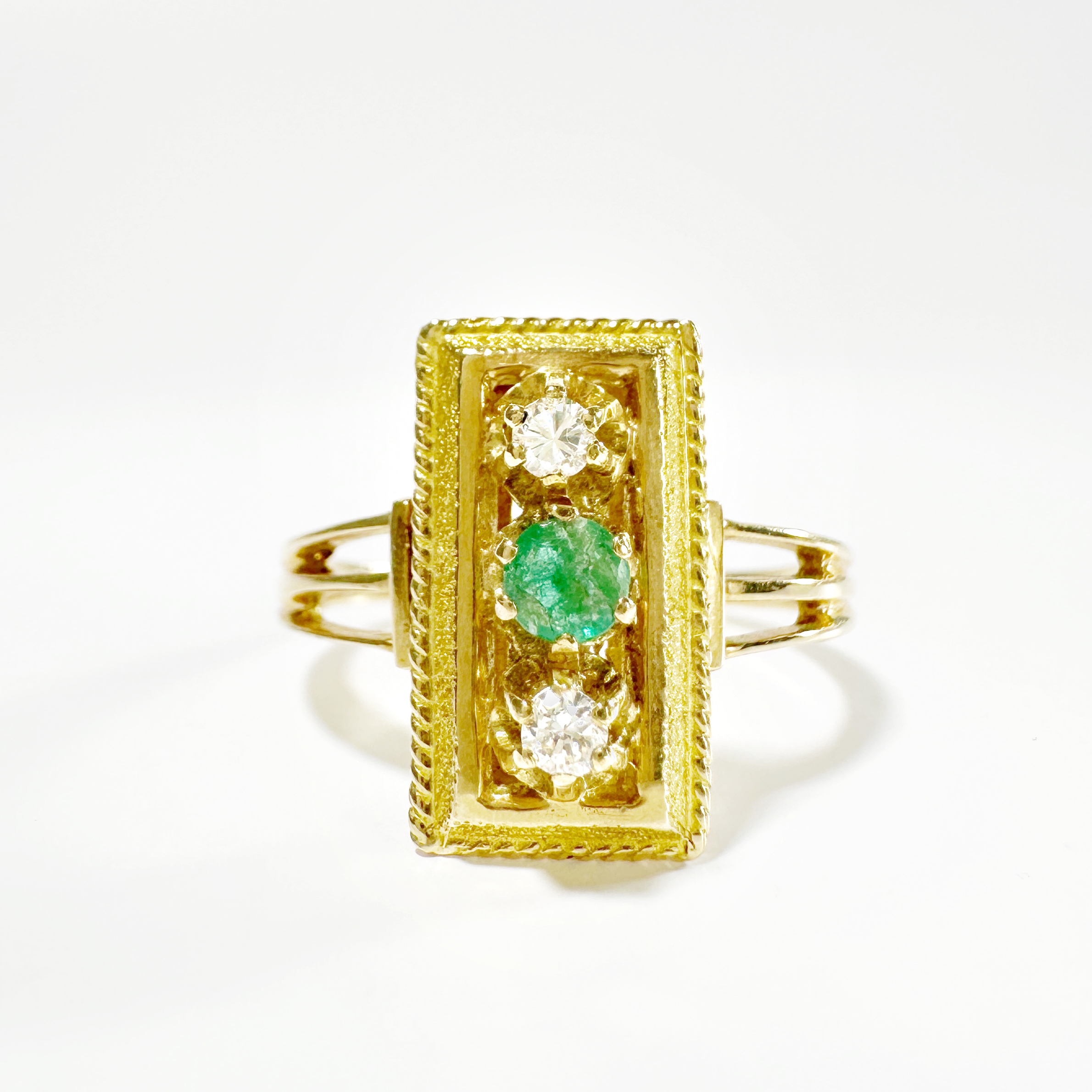Yellow gold and white sapphire ring “Imogene”
$404
Out of stock
- Authenticity
- Secure payment
- Free returns
- Secure delivery
Description
Sublime Art Nouveau period ring in 18-carat gold, whose central hexagonal motif features a brilliant-cut white sapphire set in white gold. Openwork and finely chiseled, this white gold motif contrasts with the yellow gold band, and is supported by the white gold shoulders, cut into an arrowhead.
Size FR 55/ UK O / US 7.5
Weight: 1.69g
Eagle hallmark
This unique piece had a previous life in France.
The story: The period between the end of the nineteenth century (1895) and the beginning of the twentieth century (1910) saw the birth of the Art Nouveau movement, which would impact architecture, art and jewelry. This artistic movement highlights the aesthetics of curved lines, interlacing or arabesques. Art Nouveau jewelers, wanting to put an end to the rigour and symmetry of 19th century jewelry, created new techniques and used new materials such as horn, tortoiseshell, amber, and cloisonné enamel. The diamond remains, during this period as always, a reference stone for the jeweler.
 en
en
 Français
Français
